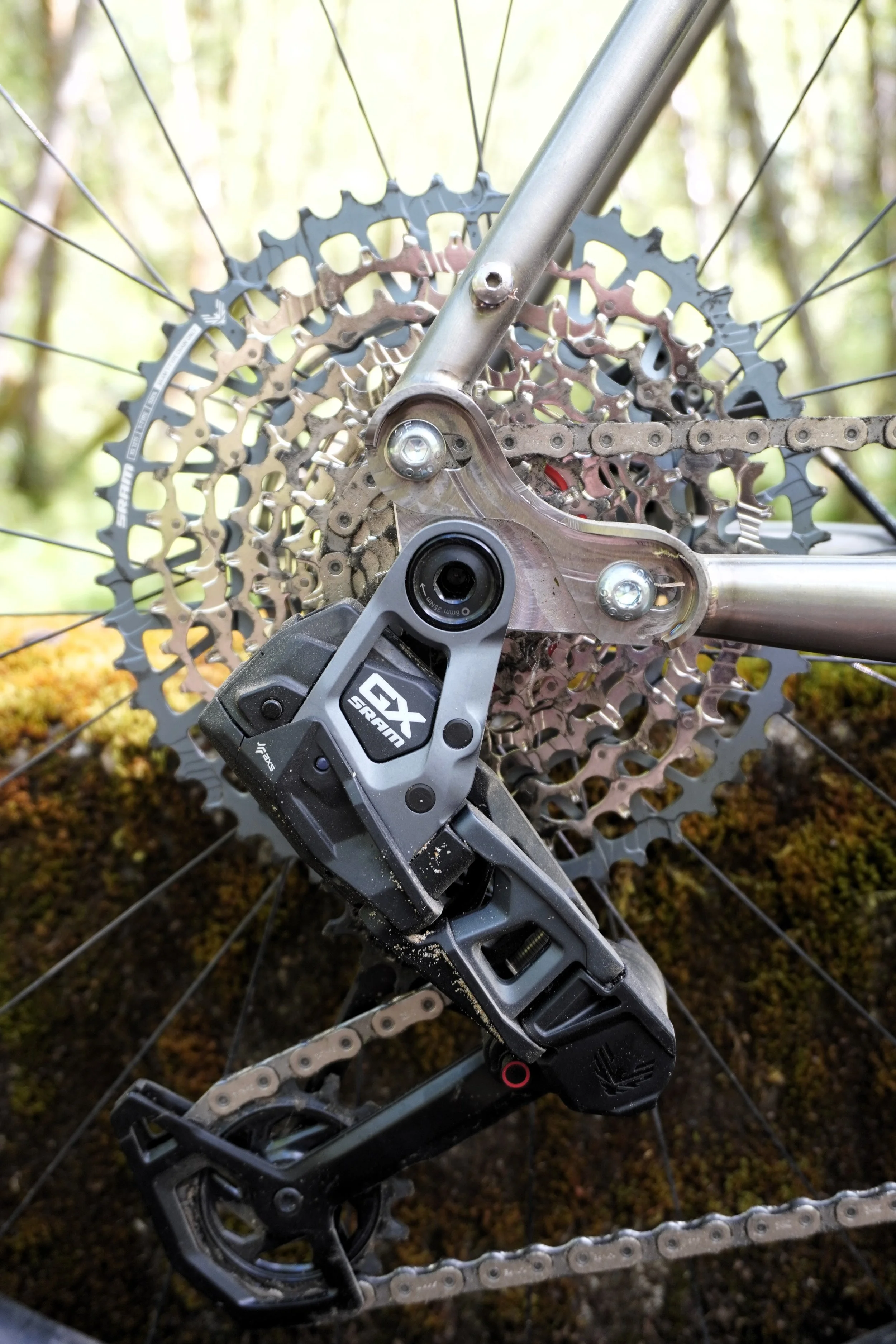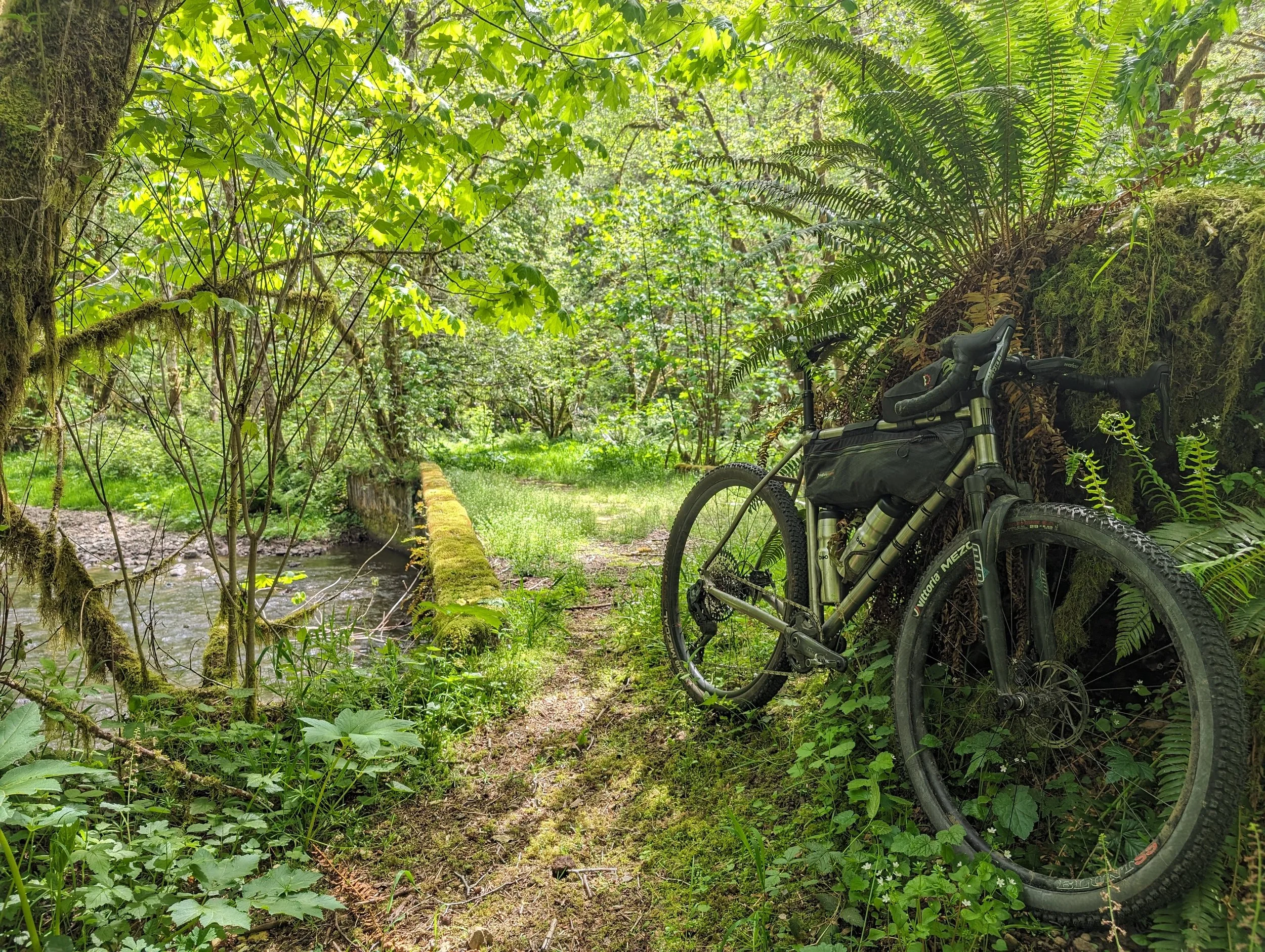My Titanium Travel Gravel Bike
The bike in its natural habitat.
The first bike I ever welded was a titanium “cyclocross” frame at the United Bicycle Institute’s Portland framebuilding course (RIP) back in 2015. Cyclocross is in quotes because back then there were only faint rumblings of the craze that would become “Gravel,” and a ‘cross bike was the closest thing to what I wanted. I remember having to convince an instructor to let me build the frame with room for a 38mm tire, which was considered quite large for a drop-bar bike back then.
Fast forward to 2024 and gravel bikes have taken over most of the industry and become just as capable off-road as the mountain bikes we were riding back in 2015. I won’t claim to have been ahead of my time, but I’ve basically been building that same bike from 2015 for almost a decade, just in different materials and with slight tweaks to the geometry and componentry as the industry evolves.
One of the main drivers of the refinement of my gravel bike design has been how and where I ride. Back in 2015 I was mostly riding on roads and taking occasional gravel cutoffs. These days I almost exclusively ride off-road, with the occasional stretch of pavement to tie two areas together if necessary.
There was a road here once upon a time…
I’m fortunate enough to have had the wet side of the coast range as my gravel bike proving ground for the last few years. While I love the vast network of dirt paths back home there’s something to be said for the density at the coast. In a relatively short ride you can experience silky smooth hardpacked gravel all the way to fist-sized boulders through a wash-out. It’s also steep out there, with grades routinely over 20% and a few spots north of 30%. I like climbing, and how a bike handles technical and strenuous climbs is important to me - there’s no better place I’ve found to test that than at the coast.
I designed this bike to be able to handle anything I could find at the coast and then some. Lately I haven’t been able to ride as much, and I wanted a bike that I could just grab and be able to ride wherever I’m able to find the time and space. I’m also taking this bike on our honeymoon in New Zealand, which by all reports has just as wide a range of surfaces as our coast range.
With that goal of versatility in mind, I cobbled together some old and new parts for the build. The most polarizing component is probably the fork. I’ve been riding the MRP Baxter 60mm suspension fork for about a year now, and in my eyes the pros outweigh the cons. I don’t “need” suspension on this bike, but I do take MTB trail connectors whenever I see them, and even during general riding the suspension takes the edge off pot-holes and allows me to descend with more confidence. The weight penalty is marginal, especially on a bike loaded with gear. If I want to drop a few grams though, I have the new carbon Whisky MCX+ fork to swap in for it.
I usually run 700c tires in the 40-50mm range for a gravel bike, but there’s some gnarly trails down in New Zealand I want to ride and I’m not fitting my hardtail in a suitcase. I’ll probably put on some 50’s for general use as that allows me to run the sliding dropouts all the way forward for a little sportier handling. It’s good to know I can fit up to a 29x2.25” tire if I want to though.







Hydro brakes and the TSA don’t get along well, so I’m sticking with my well-used Paul Components Klamper mechanical brake calipers. I’ve had these for years and only serviced them once, they just work, and look pretty doing it. I ran the rear brake cable externally on the downtube. When it comes time to pack the bike, I can just unfasten the left side slider insert and maintain the brake adjustment. Cable splitters on a bike like this tend to just let water and grit into the cable housing.
The drivetrain has a mix of old and new SRAM AXS components. I’ve been wanting to try the new Transmission derailleurs, and I have to say I’m a fan. The shifting is noticeably slower than the older Eagle stuff, but the ability to shift under full load is a game changer off-road, once you break the habit of letting off for shifts. One challenge that arose from using a Transmission derailleur was designing a sliding dropout around it.
There aren’t many sliders that work with Transmission derailleurs at moment, and most change the orientation of the derailleur relative to the chainstay/BB plane as they go through their travel, which is less than ideal and can affect shift performance. These sliders keep the derailleur in phase with the BB, and work with flat mount brakes natively. It took a lot of time in CAD and machine time to make them but I wanted to have the ability to run this bike as a singlespeed some day. I also didn’t want a broken derailleur to ruin a ride or a trip.
Trying to make a bike that will excel in all conditions is a fool’s errand. There will always be compromises. Still, I feel this bike is suited to that increasingly blurry space between gravel bikes and mountain bikes - a Liminal space, if you will.

